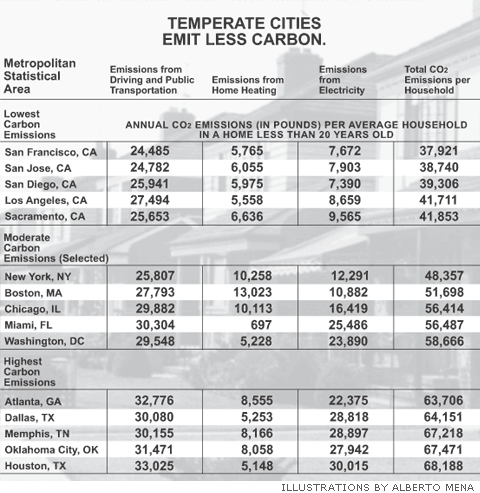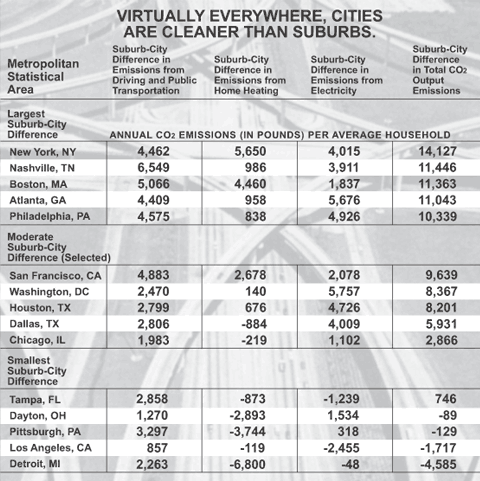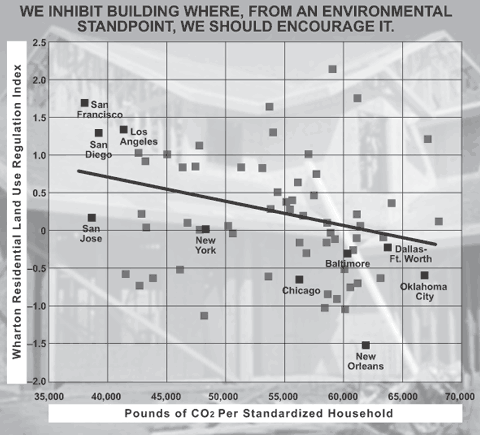On a pleasant April day in 1844, Henry David Thoreau—the patron saint of American environmentalism—went for a walk along the Concord River in Massachusetts. With a friend, he built a fire in a pine stump near Fair Haven Pond, apparently to cook a chowder. Unfortunately, there hadn’t been much rain lately, the fire soon spread to the surrounding grass, and in the end, over 300 acres of prime woodland burned. Thoreau steadily denied any wrongdoing. “I have set fire to the forest, but I have done no wrong therein, and now it is as if the lightning had done it,” he later wrote. The other residents of Concord were less forgiving, taking a reasonably dim view of even inadvertent arson. “It is to be hoped that this unfortunate result of sheer carelessness, will be borne in mind by those who may visit the woods in future for recreation,” the Concord Freeman opined.
Thoreau’s accident illustrates a point that is both paradoxical and generally true: if you want to be good to the environment, stay away from it. Move to high-rise apartments surrounded by plenty of concrete. Americans who settle in leafy, low-density suburbs will leave a significantly deeper carbon footprint, it turns out, than Americans who live cheek by jowl in urban towers. And a second paradox follows from the first. When environmentalists resist new construction in their dense but environmentally friendly cities, they inadvertently ensure that it will take place somewhere else—somewhere with higher carbon emissions. Much local environmentalism, in short, is bad for the environment.
Finally, a reason to check your email.
Sign up for our free newsletter today.
Matthew Kahn, a professor of economics at UCLA, and I have quantified the first paradox. We begin by estimating the amount of carbon dioxide that an average household would emit if it settled in each of the 66 major metropolitan areas in the United States. Then we calculate, for 48 of those areas, the difference between what that average household would emit if it settled in the central city and what it would emit in the suburbs. (The remaining 18 areas had too little data for our calculations.) A few key points about our methodology follow; if you’re interested in all the methodological details, click here.
First, by “average household,” we mean average in terms of income and family size, so that we aren’t comparing urban singles with large suburban families. However, we don’t want to standardize the physical size of the home. People who move to suburban Dallas aren’t likely to live in apartments as small as those in Manhattan. Smaller housing units are one of the important environmental benefits of big-city living.
Second, we try to estimate the energy use from a typical new home in an area—specifically, one built in the last 20 years—which sometimes means something quite different from an average one. The reason is simple. We aren’t playing a ratings game to figure out which city pollutes least; rather, we’re trying to determine where future home construction would do the least environmental damage.
We calculate carbon emissions from four different sources: home heating (that is, fuel oil and natural gas); electricity; driving; and public transportation. Residential energy use and non-diesel motor fuel are each responsible for about 1.2 billion tons of carbon dioxide emissions each year, out of total U.S. emissions of 6 billion tons. So these sources together reflect about 40 percent of America’s carbon footprint. Our procedure is admittedly imperfect and incomplete: for example, we do not include carbon dioxide generated as a by-product of workplace activity.
The table below shows some of the results of our research. The five metropolitan areas with the lowest levels of carbon emissions are all in California: San Francisco, San Jose, San Diego, Los Angeles, and Sacramento. These areas have remarkably low levels of both home heating and electricity use. There are cold places, like Rochester, that don’t air-condition much and thus use comparably little electricity. There are warm places, like Houston, that don’t heat much and thus have comparably low heating emissions. But coastal California has little of both sorts of emissions, because of its extremely temperate climate and because California’s environmentalists have battled for rules that require energy-efficient appliances, like air conditioners and water heaters, and for green sources of electricity, such as natural gas and hydropower. (Some analysts argue that this greenness is partly illusory—see “California’s Potemkin Environmentalism,” Spring 2008—but certainly, by our measures, California homes use less energy.) Also, despite the stereotypes about California highways and urban sprawl, some of these five cities, like San Francisco, have only moderate levels of transportation emissions, since their residents actually live at relatively high densities, which cuts down on driving.

The table’s middle panel shows five cities that rank somewhere in the middle of our sample. New York City, where driving is less common and public transportation more common than in most cities, ranks 18th. New York’s home heating emissions are, unsurprisingly, higher than coastal California’s. Electricity usage isn’t that much higher than in California, but New York’s sources of electricity, like coal, are dirtier.
Boston, in 22nd place, has cold winters and high emissions from home heating, and it makes considerable use of fuel oil, a brown technology. Boston has a little more driving than New York does, but its electricity emissions are lower, reflecting less use of coal to produce electricity in New England. Hot Miami, ranked 34th overall, uses lots of electricity but little home heating, while for chilly Chicago, at number 32, the opposite is true. Both cities have more driving than New York or California, but less than the sprawling exurbs at the bottom of our list. And Washington, D.C. ranks 44th out of 66, with some home heating, moderately high driving levels, and much electricity, produced with plenty of coal. The people in our nation’s capital may like prescribing green lifestyles, but they don’t seem to practice what they preach.
Finally, the bottom panel lists the five metropolitan areas with the highest levels of carbon emissions: Atlanta, Dallas, Memphis, Oklahoma City, and Houston. These Sunbelt cities don’t emit much carbon by heating their homes, of course. Rather, their high emissions are driven by electricity (reflecting hot summers and relatively brown sources of energy) and driving (reflecting their sprawling geography). Their households emit almost twice as much carbon as those in the top-ranked California cities.
In almost every metropolitan area, carbon emissions are significantly lower for people who live in central cities than for people who live in suburbs. The table below shows the difference for an assortment of metropolitan areas. (Because of small sample sizes, we have had to use the entire data sample to construct these estimates, not just housing built in the past 20 years.)

New York City has the largest gap in emissions between central city and suburbs of any metropolitan area in the country—unsurprisingly, since New York’s central city is the epitome of dense urban living. Our estimate is that an average New York City resident emits 4,462 pounds less of transportation-related carbon dioxide than an average New York suburbanite. The reductions in carbon emissions from home heating and electricity are comparably large, thanks to New York’s famously tiny apartments. Manhattan is one of the greenest places in America.
Boston and Philadelphia are the third and fifth cities on the list. Though hotter summers and more coal make Philadelphia browner than Boston, the city-suburb differences in both areas reflect the high density and abundant public transportation in their central cities. Nashville and Atlanta, on the other hand, rank second and fourth not because their central cities are particularly green but because extensive driving makes their far-flung suburbs particularly brown.
The table’s bottom panel shows the five metropolitan areas with the smallest differences in emissions between central city and suburbs. Notice that in only four cases in the 48-city sample are carbon emissions higher in central cities than in suburbs. In Los Angeles, central-city residents are using far more electricity than their suburban counterparts—possibly because newer, energy-efficient houses tend to be in the suburbs and because the urban core has many large homes. In Pittsburgh, Dayton, and Detroit, central-city residents are using a lot of energy to heat their homes. Again, this reflects primarily the older stock of homes in these places: if the central cities were spawning modern, efficient apartments, they would be more energy-efficient.
These four cities notwithstanding, the data suggest a strong general pattern: households in dense urban areas have significantly lower carbon emissions than households in the suburbs. The lifestyle that Thoreau preferred, living surrounded by green space, tends to be far less kind to the planet and far likelier to raise global temperatures, just as Thoreau himself did that afternoon in 1844.
There is a large and growing literature, ranging from complete skepticism to ultra-alarmism, devoted to the question of just how much environmental damage is associated with carbon emissions. The widely cited Stern Review on the Economics of Climate Change claims that each ton of carbon dioxide emissions causes $85 worth of damage to the planet. More commonly accepted estimates are considerably lower; one meta-study suggests an average cost of about $15 per ton of carbon dioxide. The right number probably lies somewhere between $15 and $85.
Even if, like many economists, you think that the Stern Review overstates the true damage per ton and you chop its proposed cost in half, then the average new home in Memphis still does about $620 worth of environmental harm per year more than an average new home in San Francisco, since San Francisco homes are associated with 14.65 fewer tons of carbon dioxide each year. Once you crunch the numbers, that makes the lifetime environmental cost of building in Memphis, rather than San Francisco, $12,400 per home—a big number relative to Memphis’s average housing price of $90,000.
Fans of central planning might argue for a complicated tax-and-subsidy scheme that would induce people to move to greener acres. But such a scheme would be politically impossible and difficult to operate even if it were possible. Others may be drawn to a simple carbon tax, which would charge people for the social costs of their energy use. Like many economists, I find much to like in a carbon tax, but it won’t lead to good development decisions as long as the greenest parts of the country are banning new construction.
Before even considering carbon taxes, the country should rethink its land-use policies, which currently push people toward high-emissions areas and away from green ones. The chart below shows the relationship between estimated pounds of carbon dioxide emissions and the Wharton Residential Land Use Regulation Index, which is the gold-standard measure of barriers against local building in metropolitan areas. (I average across all places in the metropolitan area, weighting each place by its population, since the Wharton survey measures political jurisdictions, not metropolitan areas.)

The chart shows a strong negative correlation between restrictiveness and carbon dioxide emissions. In other words, America’s land-use regulations bind most tightly in the places where environmental concerns should lead us to have the most growth, presumably because the same environmentalists who oppose building also like to make their cities greener. Oklahoma City is among the least regulated places in America and also among the places with the highest levels of carbon dioxide emissions. Coastal California is both the greenest place in the country and one of the hardest places in which to build.
But California’s abundant restrictions on new construction don’t do much to deter building across America as a whole. No matter what the Bay Area does, plenty of new households will come into being, and they will need new homes. By restricting local development, California regulators just make sure that construction occurs someplace else. That someplace else tends to be a lot less environmentally friendly than the California coast, blessed as it is with a superbly temperate climate. The net result of this process: land-use restrictions in California increase carbon emissions and raise the risks of global warming.
The great irony, of course, is that land-use regulations are so often justified by environmental arguments. In the early 1960s, California was still fairly friendly to new development. Then an environmental movement emerged that tried, for example, to “Save the Bay” by preventing development near San Francisco. Town after town increased regulatory barriers to new construction, such as growth controls, which limit the number of permits that can be issued at the local level. Further, in 1972, the California Supreme Court handed the state’s environmental movement a stunning victory in Friends of Mammoth v. Board of Supervisors of Mono County, requiring large numbers of private developments to undergo environmental impact reviews. The reviews are fundamentally one-sided: they consider only the impact on the local environment if the development occurs, not the impact on the national or global environment if the development fails to occur. In principle, all environmental reviews in the Golden State should consider the fact that if building doesn’t occur in coastal California, then it is likely to occur someplace with considerably higher carbon emissions.
So California environmentalists have things exactly backward. If climate change is the major environmental challenge that we face, the state should actively encourage new construction, rather than push it toward other areas. True, increasing development in California might increase per-household carbon emissions within the state if the new development, following the current model, took place on the extreme edges of urban areas. A better path would be to ease restrictions in the urban cores of San Francisco, San Jose, Los Angeles, and San Diego. More building there would reduce average commute lengths and improve per-capita emissions. Higher densities could also justify more investment in new, low-emissions energy plants.
Similarly, limiting the height or growth of New York City skyscrapers incurs environmental costs. Building more apartments in Gotham will not only make the city more affordable; it will also reduce global warming.
Thoreau was wrong. Living in the country is not the right way to care for the Earth. The best thing that we can do for the planet is build more skyscrapers.
